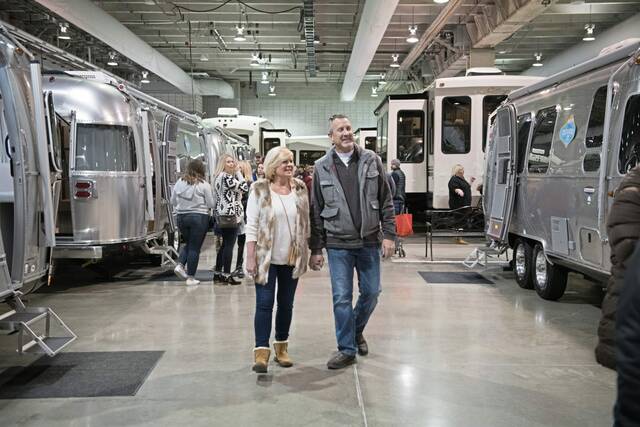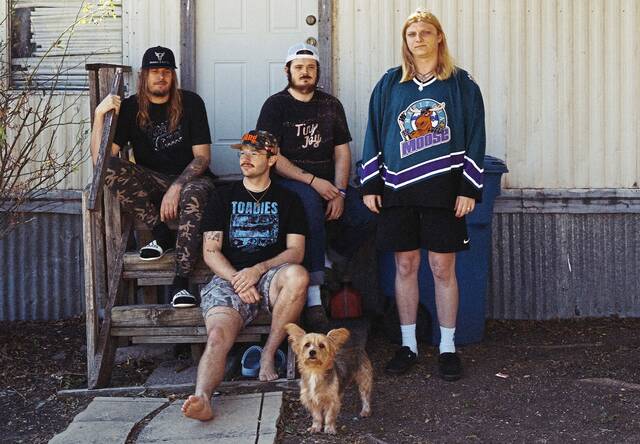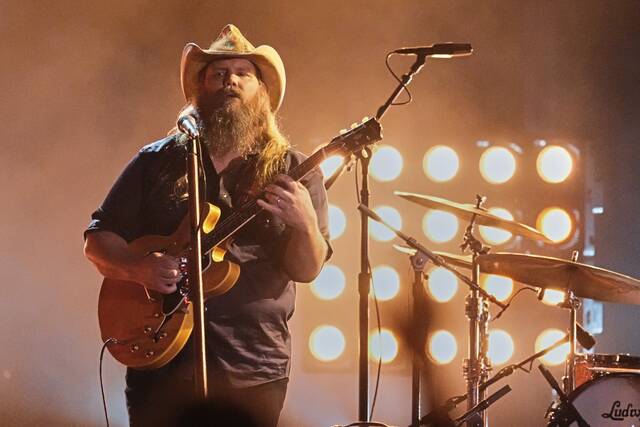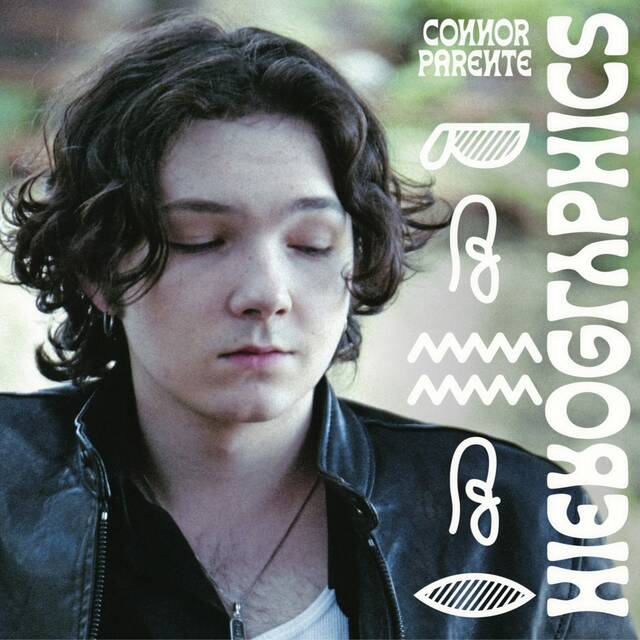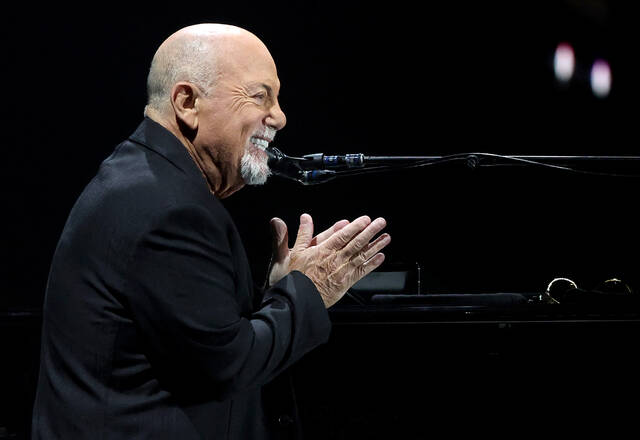Singer-songwriter Joan Osborne first shot to fame in 1995 with her hit single “One of Us,” so she certainly met her share of famous people, citing Liza Minnelli, Eric Clapton and Luciana Pavarotti as examples.
And then there was Bob Dylan, who was (and is) at a different level.
“Someone like Dylan, I think celebrity, that term doesn’t really do justice to who he is. It’s like meeting (Pablo) Picasso or something. He’s just this incredible, legendary artist, and his work has changed the culture of our country and of the whole world. So he’s not just a celebrity,” she said with a laugh.
Dylan and Osborne first met in 1998, when they recorded a duet of his “Chimes of Freedom” for the NBC mini-series “The ’60s,” and she covered Dylan songs on her first two studio albums, including her triple-platinum debut “Relish” in 1995. In 2017, she recorded an entire album reinterpreting Dylan songs, and in April she released a live album, “Dylanology Live,” from an accompanying tour that featured guests like Robert Randolph, Amy Helm and Jackie Greene.
Now Osborne is bringing Dylanology Live on the road, including a show on June 3 at the Carnegie Library Lecture Hall in Pittsburgh’s Oakland neighborhood. She’ll be joined by special guests Anders Osborne, Gail Ann Dorsey and Cindy Cashdollar, with Will Bryant and Lee Falco also playing.
“When we decided to release the live album that’s just come out in April, we couldn’t get all of those same special guests and we thought well, let’s just do the same thing and just get some other cool people,” Osborne said. “… These are all people that I know and have worked with and luckily they were all available for this and not only interested, but very enthusiastic.”
In a call last week from her home in upstate New York, Osborne discussed song selection, meeting Dylan, the 30th anniversary of her debut album, “Relish” and more:
When you were choosing the songs, how difficult was it to narrow down which Dylan songs you wanted to play for this?
That’s always the double-edged sword when you are doing a Bob Dylan project. On the one hand, we kind of can’t go wrong because there’s dozens, if not hundreds, of amazing, classic, incredible songs, so you can put together five or 10 different shows out of what he has. Then on the other hand, it’s like, well, how do you decide? So the process was partly sort of instinctive. We did want to do a lot of the stuff that’s on the live album, but we also didn’t want to just limit ourselves to only that. We wanted to do things from all throughout Dylan’s career and that includes stuff from his most recent record, “Rough and Rowdy Ways,” all the way back to his first album.
We wanted to do this whole wide spread of his material and then I asked the guests, are there certain songs that you’re really connected to or something that you really want to do? People came up with their own ideas, so then you try to take what that is and then balance it out, as far as making a cool show. You don’t want it to be all ballads or nothing but rockers, 10 in a row or something, so you want to create a night that has a nice flow for the audience too.
When you first started this, was it daunting at all to reimagine his songs?
Well, of course it is, just when you first think about it. But the fact is, people have been covering Bob Dylan’s songs since before he put his first album out. So there were always other versions of his songs out there and other interpretations. And for me, I’m excited to be a songwriter and to sing the songs that I can write, but as a singer, I don’t want to limit myself to only the songs that I can write, so I’ve always looked around for other people’s material that really speaks to me.
Bob Dylan songs are a big part of that and have been since I was first starting out, so I think there’s a lot of leeway that you have. Certainly the Bob Dylan version is going to be the definitive version of it, but once you accept that your version is not going to be the definitive version, it kind of frees you to find that place where your voice and your artistry meet the song in a way that maybe allows it to blossom in a way that it hasn’t before. I’m never gonna sound like Bob Dylan or be him as an artist, but I have my own take on things and my own voice, so I can bring that to these songs and make them live in a different way.
Whenever you were younger, did you grow up a fan of his?
I wasn’t really that aware of him until I moved to New York City when I was in my late teens to go to college, so I certainly knew who he was and I had heard some of his songs on the radio, but he was not somebody that I listened to at home. But then when I started to really delve into music and become part of the music scene in New York City at that time, in the ‘80s and the early ‘90s, people were performing his songs still in the coffeehouses and in the folk clubs and in the rock clubs and in the blues clubs. So he was sort of a fact of life. And then if you wanted to be a songwriter, you had to kind of understand what an incredible influence he was on literally everyone who came after him. If you’re looking to find inspiration to become a better songwriter, he’s one of the top artists that you go to, to find out how to get better at what you want to do.
What do you think it is that makes him such a great songwriter?
I mean there’s many things. I think I love the way he wove together the American traditional music with things like beat poetry or the poetry of (Arthur) Rimbaud, bringing this much, I wouldn’t say deeper, but this much more literary sensibility to the music. And I think through doing that and through having these lyrics, which are sometimes very poetic and very symbolic, he’s able to write songs that are talking about something that was happening in the moment that he wrote them, but that you can also listen to 10 years after or 20 years after or 50 years after and find something in it that is speaking to the moment that you’re living in right then. And that is part of his magic is that he uses these sort of mythic characters and this poetic language, and he’s able to construct these songs that are never going to be dated.
You got to duet with him on “Chimes of Freedom” back in ‘98. How did that come about and what was that experience like?
His people just called up my manager and said they wanted to have me sing this duet with him, and I think I probably came to their notice because of including the song “Man in the Long Black Coat” on the “Relish” album, and I think that probably brought me to their attention. I knew some of the people that he was working with and maybe that had something to do with it, too. But however it came about, I of course was falling all over myself to say yes when I heard about it. (laughs)
The experience was really interesting. I did my homework and I got the lyrics of the song and I listened to the versions that I could find and really studied it. Then when I got to the studio, I had just got off a plane from Ireland, where I had been working with The Chieftains, the traditional Irish group. And I had bought this really nice bottle of Irish whiskey and I was going to present it to Bob as a little gift. So I was there a little bit early and was talking to some of the other musicians that I know that work with him, and my back was to the door. And yet I knew instantly when he walked in the room, because even though it wasn’t overt, everyone’s attention very subtly shifted to him. And it was like they were taking the temperature of, all right, what’s going to happen next? And what’s his mood? And it was a very definite change of the emotional weather in the room.
Then he came over and said hello and I gave him my little gift, and we chatted for a minute and then we got right to it. He doesn’t waste a lot of time from my experience in the studio. We didn’t rehearse the song at all. We just got up on the mic. We were on the same microphone, so my face was about three inches away from his face. And we just did a take of the song, just boom like that. So I think for me, it was kind of a blessing that I was thrown into it like that because I didn’t have a lot of time to be nervous or overwhelmed or anything like that. I just had to concentrate on matching his vocal phrasing. Again, we did not rehearse. He didn’t go over with me what he expected me to do. I just had to pick a note that I thought was gonna work and pick a part that I thought was gonna work with him and just watch his lips very closely to try to match his phrasing. So I was hyper-focused, and I think that kept me from being too nervous. And then we did it again a totally different way, which I guess he’s infamous for. He has this very restless intelligence and once he’s done something one way, he doesn’t wanna do it that way anymore. So we did two more takes, each one different from the last, and then we were done and that was it.
Related
• Bob Dylan's Rough and Rowdy Ways tour creates memorable night in Pittsburgh• Pittsburgh's The Gotobeds return after 6 years with new album 'Masterclass'
• 2025 Pittsburgh area concert calendar
This year is also the 30th anniversary of “Relish,” so do you have plans to celebrate that?
Yes, absolutely. The label is gonna re-release the album in, I believe, September. So that’s gonna happen. And then I am getting together with the jazz artist Christian McBride, and he and I are going to re-record all the songs from “Relish,” giving it more of a jazz flavor with some jazz players. I had the idea to re-record the songs a couple of years ago, and I thought that’d be a great way to mark this 30th anniversary.
And then last year, I was at the Newport Jazz Festival and Christian McBride, who is the artistic director of the jazz festival, came up and we started talking. We just got on like a house on fire and we’re like, oh we gotta work together. We gotta do something. So as I was leaving the festival, I texted him and I said what do you think about re-recording these “Relish” songs but doing it in a way that they could live in this jazz world? He loved the idea and so we’ve been working on arrangements and are going into the studio right before I go on tour for the Dylan things, so it’s all happening right now.



